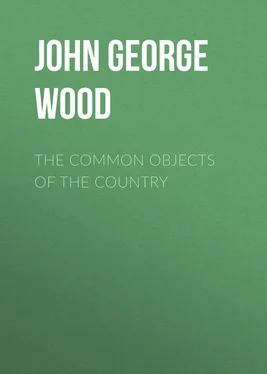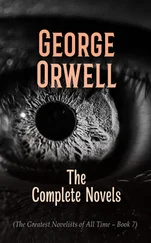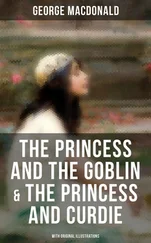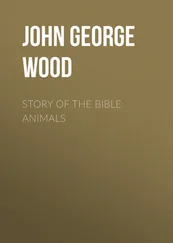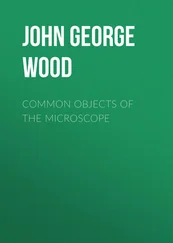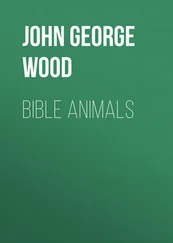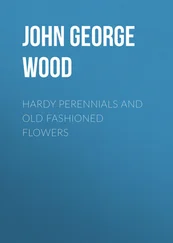John George Wood - The Common Objects of the Country
Здесь есть возможность читать онлайн «John George Wood - The Common Objects of the Country» — ознакомительный отрывок электронной книги совершенно бесплатно, а после прочтения отрывка купить полную версию. В некоторых случаях можно слушать аудио, скачать через торрент в формате fb2 и присутствует краткое содержание. Жанр: foreign_prose, foreign_antique, на английском языке. Описание произведения, (предисловие) а так же отзывы посетителей доступны на портале библиотеки ЛибКат.
- Название:The Common Objects of the Country
- Автор:
- Жанр:
- Год:неизвестен
- ISBN:нет данных
- Рейтинг книги:4 / 5. Голосов: 1
-
Избранное:Добавить в избранное
- Отзывы:
-
Ваша оценка:
- 80
- 1
- 2
- 3
- 4
- 5
The Common Objects of the Country: краткое содержание, описание и аннотация
Предлагаем к чтению аннотацию, описание, краткое содержание или предисловие (зависит от того, что написал сам автор книги «The Common Objects of the Country»). Если вы не нашли необходимую информацию о книге — напишите в комментариях, мы постараемся отыскать её.
The Common Objects of the Country — читать онлайн ознакомительный отрывок
Ниже представлен текст книги, разбитый по страницам. Система сохранения места последней прочитанной страницы, позволяет с удобством читать онлайн бесплатно книгу «The Common Objects of the Country», без необходимости каждый раз заново искать на чём Вы остановились. Поставьте закладку, и сможете в любой момент перейти на страницу, на которой закончили чтение.
Интервал:
Закладка:
J. G. Wood
The Common Objects of the Country
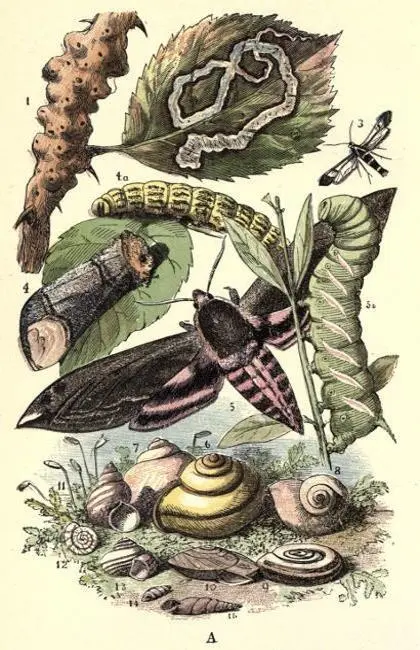
A
PREFACE
In the following pages will be found short and simple descriptions of some of the numerous objects that are to be found in our fields, woods, and waters.
As this little work is not intended for scientific readers, but simply as a guide to those who are desirous of learning something of natural objects, scientific language has been studiously avoided, and scientific names have been only given in cases where no popular name can be found. In so small a compass but little can be done; and therefore I have been content to take certain typical objects, which will serve as guides, and to omit mention of those which can be placed under the same head.
Every object described by the pen is illustrated by the pencil, in order to aid the reader in his researches; and the subjects have been so chosen that no one with observant eyes can walk in the fields for half-an-hour without finding very many of the objects described in the book.
CHAPTER I
EYES AND NO EYES—DIFFICULTIES OF OBSERVERS—THE BATS—LONG-EARED BAT—ITS UTILITY—SPORT AND MURDER—SONG OF THE BAT—A BRAVE PRISONER—HOW BATS FEED—HAIR OF BAT AND MOUSE—WING OF THE BAT—THE FIELD-MOUSE—ITS STEALTHY MOVEMENTS—HARVEST MOUSE—WATER RAT—AN INNOCENT VICTIM.
Every one has read, or at least heard of, the tale entitled “Eyes and no Eyes”; which tale is to be found in the Evenings at Home . Now this story, or rather the moral of it, is, in my opinion, as often used unfairly as rightly.
Although there are those who pass through life with closed eyes and stopped ears, yet there are many more who would be glad to use their eyes and ears, but know not how to do so for want of proper teaching. To one who has not learned to read, the Bible itself is but a series of senseless black marks; and similarly, the unwritten Word that lies around, below, and above us, is unmeaning to those who cannot read it.
Many would like to read, but cannot do so; and it is in order to help such, to bring before them the first alphabetical teaching, that the following pages are written.
It is no matter of marvel that many an observant person becomes bewildered among natural objects; that he is lost amid the variety of animal, vegetable, and mineral life in which he lives; and that, after vainly attempting to comprehend some simple object, he finds himself baffled, and so in despair ceases to inquire into particulars, and contents himself with admiration of and love for nature in general.
Objects change so rapidly and so constantly, that there is hardly time to note a few remarks before the season has passed away; the object under examination has changed with it, and a year must elapse before that investigation can be continued.
From experience I know how valuable are even a few hints by which the mind can be directed in a straight course without wasting its strength and losing its time by devious wanderings. Only hints can be given, for the limits of the volume forbid any lengthened discussion of single objects; and, besides, the mind is more pleased to work out a subject according to its own individuality than to have it laid down as completed, and to be forbidden to go any further.
Almost every object that is described by the pen will be figured by the pencil, in order to assist the reader in identifying the creature in an easier manner than if it were merely described in words.
Of the birds I shall not be able to treat, as they alone would occupy the entire space of this volume; and, for the same reason, only a short account can be given of each object.
As in the scale of creation the mammals fill the highest place, we will speak of them first, taking, as far as possible, each creature in its own order.
Perhaps there are few people who would not feel some surprise when they learn that the very highest of our British animals is the Bat. Usually the bat is looked upon with rather a feeling of dread, and is regarded as a creature of such ill-omen that its very presence causes a shudder, and its approach would put to flight many a human being.
There is certainly some ground for this feeling; for the night-loving propensities of the creature, its weird-like aspect, its strange devious flight, and more especially its organs of flight, are so interwoven with the popular ideas of evil and its ministers, that bats and imps appear to be synonymous terms.
Painters always represent their imps as upborne by bats’ wings, furnished with several supplementary hooks; and sculptors follow the same principle.
In consequence, all bats and objects connected with bats are viewed with great horror, with two exceptions: a cricket-bat and a bat’s-wing gas-burner.
Now, I cannot but think that this is very hard on the bats. It is said that the African negroes depict and describe their evil spirits as white; and that, in consequence, the negro children fly in consternation if perchance a white man comes into their territory.
Yet, a white man is not so very horrid an object after all, if one only dare look at him; and the same remark holds good with the bats.
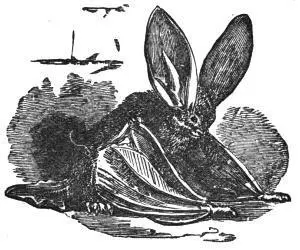
COMMON LONG-EARED BAT.
A very pretty creature is a bat, more especially the long-eared species, Plecotus communis , as it is scientifically called, and its habits are most curious. It is well worth the time to watch these little creatures on a warm summer’s night, as they flit about in the air, and to note the enjoyment of their aërial hunt. They are fearless animals; and provided that the observer remains tolerably still and does not speak, bats will often flit so close to his face that he could almost catch them in his hand.
Their flight is very singular, and reminds one of the butterfly in its apparently vague flitting. Indeed, there are many large moths that fly by night who can hardly be distinguished from the bats, if the evening be rather dark, so similar are they in their mode of journeying through the air.
From this peculiarity of flight, they are accounted difficult marks for a gun; and it is unfortunately a custom with some ruthless powder-burners to practise by day at swallows and by night at bats. Now, even putting the matter in its lowest form, it is wrong to shoot swallows; for they are most useful birds, and serve to thin the host of flies and other insects that people the summer air.
As regards the swallow, this is well known, and does serve to protect it from some persons who have more compassion than the generality. Moreover, the swallows, swifts, and martins are extremely pretty birds, and their beauty is in some degree their shield.
But the bat is as useful a creature as the swallow, and in the very same way; for, when the evening comes on, and the swallow retires to its nest, the bat issues from its home and takes up the work just where the swallow leaves it—the two creatures dividing the day and night between them. Therefore, let those who refrain from swallow shooting include the bat in their free list.
Some there are whom nothing can restrain from killing, for the instinct of slaughter is strong in them. With them nothing is valuable unless it is to be killed. If it can be eaten afterwards, so much the better; but the great enjoyment consists in the mere act of killing.
They contrive to disguise the ugliness of the thing by giving it any name but the right one; but, in spite of the name, the thing exists. And I wonder, if they were to look very closely into themselves, whether they would not find there a decided desire to kill men, provided that they had no reason to dread the consequences. Those who have practised the sport unanimously say that nothing is so exciting as man-hunting and killing and that all other sport is tame in comparison.
Читать дальшеИнтервал:
Закладка:
Похожие книги на «The Common Objects of the Country»
Представляем Вашему вниманию похожие книги на «The Common Objects of the Country» списком для выбора. Мы отобрали схожую по названию и смыслу литературу в надежде предоставить читателям больше вариантов отыскать новые, интересные, ещё непрочитанные произведения.
Обсуждение, отзывы о книге «The Common Objects of the Country» и просто собственные мнения читателей. Оставьте ваши комментарии, напишите, что Вы думаете о произведении, его смысле или главных героях. Укажите что конкретно понравилось, а что нет, и почему Вы так считаете.
